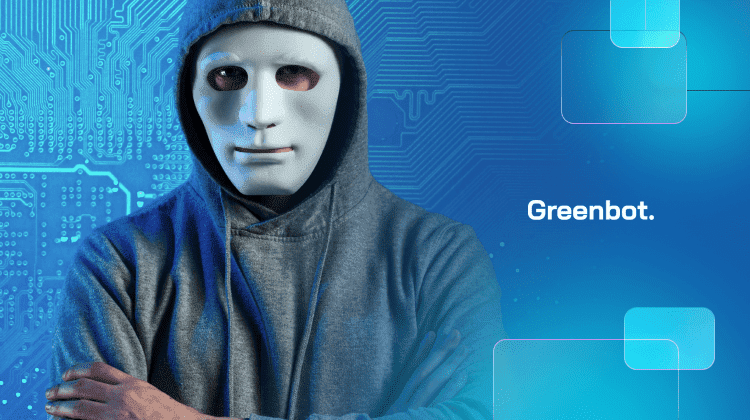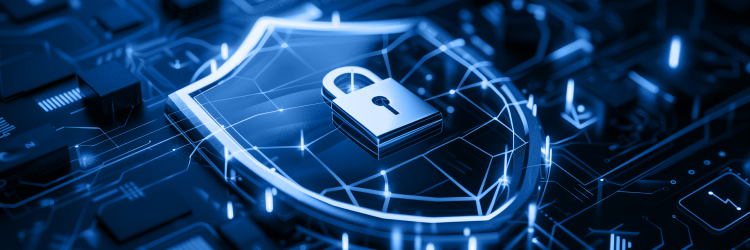
Imagine receiving a message from your CEO, instructing you to transfer company funds—only to realize later that it wasn’t them, but an AI-powered deepfake scam. AI attacks are making cybercrime faster, smarter, and harder to detect. Hackers now use AI to automate phishing, bypass security, and create realistic deepfake impersonations.
This article explores how AI is used in cyberattacks and what it means for security.
The Evolution of Cyber Threats with AI
Early cyberattacks relied on manual techniques like phishing, SQL injections, and malware to exploit vulnerabilities. These methods were labor-intensive, required direct human input, and followed predictable patterns. Security defenses, such as firewalls and antivirus software, were often enough to block these attacks. According to an IBM Security Report, hackers had to constantly refine their tactics, but cyber threats remained relatively static and easier to detect.
With AI integration, cyber threats have become faster, smarter, and highly automated. AI can scan networks, identify weaknesses, and launch attacks in real-time with little human effort. A Darktrace survey found that 74% of IT security professionals have seen a significant rise in AI-powered threats, underscoring how AI is amplifying cyber risks.
Malware now evolves dynamically, bypassing traditional security. AI-driven phishing campaigns generate convincing, personalized messages, making detection harder. An NCSC Report also says cybercriminals use AI for adaptive hacking, making defenses struggle to keep up.
Characteristics of AI-Powered Cyberattacks

Here are key features that set AI-driven attacks apart:
- Automation: AI speeds up attacks by automating tasks like vulnerability scanning and malware deployment.
- Data Analysis: Hackers use AI to study patterns, user behavior, and security gaps before launching attacks.
- Adaptability: AI-driven attacks adjust in real-time to evade security defenses.
- Efficiency: AI reduces manual effort, allowing hackers to scale attacks quickly.
- Precision Targeting: AI personalizes attacks, making scams, phishing, and deepfakes more convincing.
Common Types of AI Attacks
There are several types of AI-powered attacks, and here are the most common ones:
1. AI-Driven Phishing Attacks
AI makes phishing scams almost impossible to detect by generating realistic, personalized emails that mimic trusted brands.
Attackers use AI to:
- Scrape social media and public data to craft convincing messages.
- Bypass spam filters by continuously adjusting wording and formatting.
- Generate deepfake voice and video phishing, tricking victims into revealing credentials.
2. Adversarial Attacks
These attacks target AI models directly, tricking them into making incorrect decisions. Examples include:
- Evasion Attacks – Manipulating input data (like images or text) to fool AI models into misclassifying threats.
- Jailbreaking – Exploiting weaknesses in AI chatbots or assistants to make them generate harmful content.
- Data Poisoning – Injecting malicious data into AI training sets to corrupt its decision-making.
3. Weaponized AI Models
Some AI models are built purely for hacking, allowing cybercriminals to automate attacks. Examples include:
- AI-powered bots that scan for software vulnerabilities.
- Self-evolving malware that adapts in real-time to avoid detection.
- Deepfake models are used to impersonate executives or bypass biometric security.
4. Data Privacy Attacks
AI handles vast amounts of personal data, making it a prime target for hackers. Attackers exploit AI models to extract sensitive financial and personal information using:
- Model Inversion – Reconstructing data from an AI system’s memory.
- Membership Inference – Identifying if specific user data was used in AI training.
- Side-Channel Attacks – Analyzing system response times to uncover hidden information.
5. AI-Driven Denial-of-Service (DoS) Attacks
AI enhances DoS attacks, overwhelming systems with automated traffic. These attacks:
- Learn security weaknesses in real time and adjust strategies.
- Launch botnet-driven floods, crashing services with minimal effort.
- Exploit AI systems, forcing them to process excessive requests until failure.
Real-World Examples of AI in Cybersecurity
AI-powered attacks are becoming more common. Here are real cases showing their impact:
- DeepSeek Cyberattack (2025). Hackers exploited weaknesses in DeepSeek, a Chinese AI chatbot, manipulating its responses to spread misinformation and extract sensitive user data. This forced the company to halt new sign-ups while addressing security flaws, exposing the risks of AI-powered chatbots.
- The $25 Million Deepfake Video Call Scam. Fraudsters used AI-generated deepfake audio to impersonate a company executive, tricking an employee into transferring $25 million to fake accounts. This demonstrated how AI can mimic human voices with near-perfect accuracy.
- T-Mobile Data Breach (2022-2023). Hackers stole data from 37 million customers, using AI-driven attack methods to evade detection. AI-assisted hacking made intrusion detection systems ineffective, prolonging the attack.
- SugarGh0st RAT Phishing Campaign (2024). A Chinese-backed group used AI-enhanced phishing emails to target U.S. AI researchers, attempting to steal sensitive information about advanced machine learning models.
- Italian AI Voice Scam (2025). Scammers used AI to clone the voice of Italy’s Defense Minister, Guido Crosetto. They convinced business leaders, including former Inter Milan owner Massimo Moratti, to send money. Authorities later traced and froze the funds in a Dutch bank.
- Senator Deepfake Impersonation (2024). Attackers created a fake video call of U.S. Senator Ben Cardin, using AI to mimic former Ukrainian Foreign Minister Dmytro Kuleba.
AI-Driven Ransomware and Automated Attacks
Ransomware is a major cyber threat. It locks victims out of their systems until a ransom is paid. A major attack on Synnovis, which handles blood tests for NHS England, exposed patient data and disrupted services in over 3,000 hospitals. The Qilin cybercrime group was behind it.
AI is changing ransomware. Attackers use it to tweak real-time encryption, evade security, and spread malware faster. AI scans defenses, adjusting attacks to avoid detection. This makes ransomware harder to stop.
AI also lowers the skill needed to launch attacks. Groups like FunkSec use AI-assisted malware development, allowing even inexperienced hackers to refine and deploy advanced ransomware quickly. This makes cyber threats more scalable and dangerous.
How AI is Used in Defensive Cybersecurity

AI is both a weapon and a shield in cybersecurity. Hackers use it to attack, but defenders can use it to strengthen security. The real challenge is who deploys it better.
AI enhances security by spotting unusual patterns in real time. Continuous monitoring helps detect threats early and block attacks before they happen.
One major risk is zero-day exploits, where hackers target unknown software flaws. AI helps find these vulnerabilities faster, allowing companies to fix them before exploiting them.
Artificial Neural Networks (ANNs) improve threat detection by learning from past attacks. Their ability to adapt makes them a key tool for modern cybersecurity.
Ethical and Regulatory Challenges of AI in Cybersecurity
AI-powered attacks make cyber threats more dangerous. Even inexperienced hackers can launch automated attacks that adapt, evade detection, and exploit vulnerabilities faster than traditional methods. AI is also used for deepfakes, phishing, and automated hacking, increasing security risks. Bias in AI security systems can weaken threat detection, making some attacks too complex to stop.
Strict regulations are needed to address these risks. Laws like the EU’s AI Act and the U.S. AI Executive Order sets ethical AI standards, but enforcement is key. Companies must follow these rules to protect critical infrastructure and strengthen cybersecurity.
Impact of AI-Generated Attacks
The following are some of the common impacts of AI-generated attacks:
- Increased Risks for Businesses and Consumers: AI-powered attacks lead to more data breaches, fraud, and financial damage.
- More Advanced Cyber Threats: AI helps hackers automate and refine attacks, making them more sophisticated and complex to block.
- Challenges for Security Teams: Defenders struggle to keep up as AI-generated attacks evolve faster than traditional security can adapt.
- Exploitation of Large Language Models: Hackers use AI to generate realistic phishing emails, deepfakes, and fake websites, tricking victims.
- AI-Enhanced Targeting: AI analyzes behavior patterns to create highly personalized scams and cyberattacks.
- Automated Attack Scaling: AI makes cyberattacks more efficient and widespread, forcing businesses to rethink security strategies.
Strategies to Mitigate AI Cybersecurity Threats
AI-driven threats can’t be fully eliminated, but organizations can take steps to reduce risks:
- AI-Powered Threat Detection: AI security tools analyze real-time activity, spotting unusual behavior and blocking threats before damage occurs. Machine learning helps them adapt to new attack methods.
- Regular AI Model Audits: Frequent audits uncover vulnerabilities and prevent AI manipulation. Security teams should monitor AI interactions to flag potential risks.
- Stronger Authentication: Multi-factor authentication (MFA) and biometric verification make it harder for hackers to bypass security and steal data.
- Cybersecurity Awareness Training: Many users fall for social engineering scams because they are unaware of them. Training helps them recognize deepfakes, phishing emails, and AI-generated fraud.
- Collaboration Between Experts: AI developers and cybersecurity teams must work together to build more secure systems and anticipate AI-powered attacks.
The Future of AI in Cybersecurity

AI is reshaping cybersecurity by enhancing threat detection, pattern analysis, and real-time response. Unlike traditional security, AI adapts to new attack methods, making it a powerful tool against evolving cyber threats.
But hackers also use AI. They create adaptive malware, deepfake scams, and automated hacking tools. This has led to an AI-vs.-AI battle, where attackers and defenders constantly try to outsmart each other.
The future of cybersecurity depends on AI-powered defenses. Developers must stay ahead by building stronger AI security systems. As threats grow, cybersecurity will need to evolve just as fast.
FAQs about AI Cyberattacks
What is an AI-powered cyberattack?
An AI-powered cyberattack uses AI to automate and enhance hacking techniques. This makes them faster, more adaptive, and difficult to detect.
What is an example of an AI cyber attack?
The most popular ones include the following:
- AI-driven phishing: Personalized scam emails that trick victims.
- Deepfake scams: Fake voices or videos impersonating people.
- Adversarial attacks: Tricking AI systems into misclassifying data.
How can AI be used for hacking?
AI helps hackers crack passwords, create fake emails, bypass security, and find system weaknesses faster.
Are AI-generated phishing attacks more dangerous?
Yes. AI makes scam emails look real by copying writing styles and avoiding spam filters, making them harder to spot.
What industries are most at risk from AI cyber threats?
Banks, hospitals, and government agencies are top targets because they store sensitive data.
How do AI attacks bypass traditional security measures?
AI-based attacks exploit weaknesses in traditional security measures by using machine learning algorithms to adapt, evade detection, and launch targeted attacks.
Why are AI-generated threats a significant challenge?
Hackers now use generative AI tools to create AI-generated threats that mimic human intelligence, making them harder to identify and counter.
Can AI attacks compromise self-driving cars?
Yes. Malicious actors can launch AI poisoning attacks to manipulate machine learning models in self-driving cars, leading to dangerous misinterpretations of traffic signs or obstacles.
How can AI-powered cybersecurity tools prevent AI-generated attacks?
Using advanced machine learning models and continuous monitoring, AI-powered cybersecurity tools detect unusual behavior, identify AI-generated attacks, and stop threats before they cause damage.
Conclusion
AI attacks are a significant threat, evolving rapidly as hackers use AI algorithms to gain access to critical systems. These AI-related threats, including poisoning attacks, make it harder to distinguish between legitimate user behavior and malicious activity, allowing cybercriminals to evade detection.
To stay ahead, organizations must implement strong security protocols and an incident response plan to mitigate risks. Training AI models to identify unusual patterns in network traffic and detect potential threats is crucial. By integrating AI into cybersecurity strategies, businesses can strengthen defenses and reduce the impact of evolving cyber threats.



















